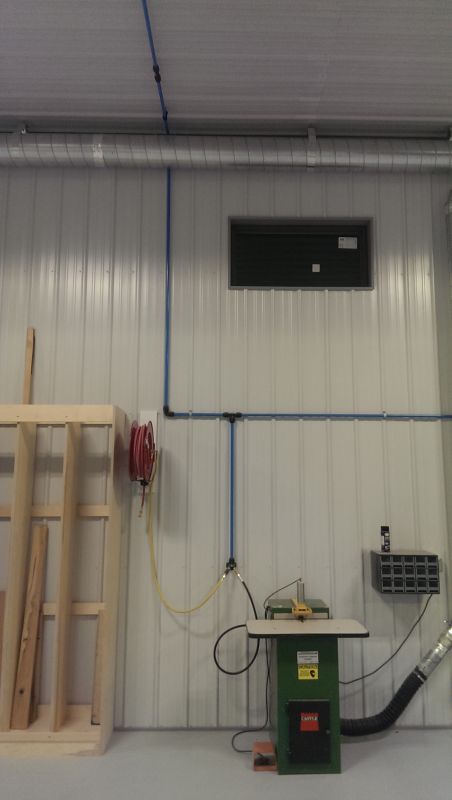Vacuum Panel Lifter
Here's some basic info on vacuum panel lifters — how they work, setup, and use. April 21, 2011
Question
I'm looking at investing in a vacuum panel lifter for lifting large 100kg panels from a stack onto a panel saw. Does anyone have experience with this type of equipment?
Forum Responses
(CNC Forum)
From contributor M:
We've had one for about 4 years. We installed a wireless remote ourselves to start/stop the vacuum pump, which is handy. Ours runs on track that is attached to the ceiling so we aren't limited to the radius of a jib crane. We have two sets of track installed in order to move it from the router to an assembly area when needed. Mostly it stays at the router to move panels onto the machine. It works great and it is easy to move and rotate the panels from vertical to horizontal when unloading from a drywall cart.
From contributor J:
Does the lifter have its own vacuum pump, or does it connect to the same pump the table uses?
From contributor M:
They are typically sold with their own pumps, matched to their rated weight capacities, I'd assume. They are pretty small and quiet. I asked the same question when we looked at it and I was either told it was not advised, or engineering data couldn't be supplied since everyone has different types of pumps on their machines. Regardless, their pump hasn't required much attention since we got it other than cleaning.
From contributor B:
Does the vacuum on these types of lifts have anything to do with assisting in lifting the weight? Or does the vac pump just grab the part and the lift assistance come from springs, air cylinders, etc?
From contributor M:
Just vacuum. There is a lift tube downstream from the grabbing mechanism. I believe the size of that tube is what gives the unit its capacity, but I don't pretend to understand the mechanics of vacuum lift. There is an airline, but that only supplies the mechanism for rotating from horizontal to vertical and back. To move a load up or down, you just squeeze or let out a lever. To move left, right, forward or back you have to push the load on the track system manually. We did our own installation to save money. I figure with efficiency and zero back injuries to operators, it was a good investment. With a little practice you can gently place a sheet of solid surface or 4 x 8 against the table pins without any further squaring of the panel. 5 x 12's are a bit more awkward, but manageable.
From contributor J:
In regards to a vacuum lifter... Depends on the lift and how it functions. Some lifts are installed with an electric winch. The most common type of lift has a vacuum tube. The vacuum pump not only applies suction to grab the part, but it also applies suction to help lift the part. To control the height of the vacuum tube and balance it, you adjust how much outside air is allowed via a valve into the tube. When you introduce air through the handle, the vacuum lifter will lower the part; when you reduce the amount of air, the tube will lift your part. A separate vacuum line controls the vacuum to the suction cups/grippers. This is simply an on/off valve. The size of the pump and gantry unit determine the weight that the lifter can lift. You also have to consider the valves in regards to air flow. This can affect the maximum weight.
From contributor L:
We've got a Schmalz vacuum lift that goes to 85kg, has a Siemens gas ring pump, 15.3A @ 208 V, 3 phase, and works well. Just need to keep the filter clean. Learn to control the swing and how fast it lifts and you can precisely place panels. The size of the lift tube determines how much weight it can lift. Use a Gorbel OH bridge crane, either ceiling mounted or free standing.
